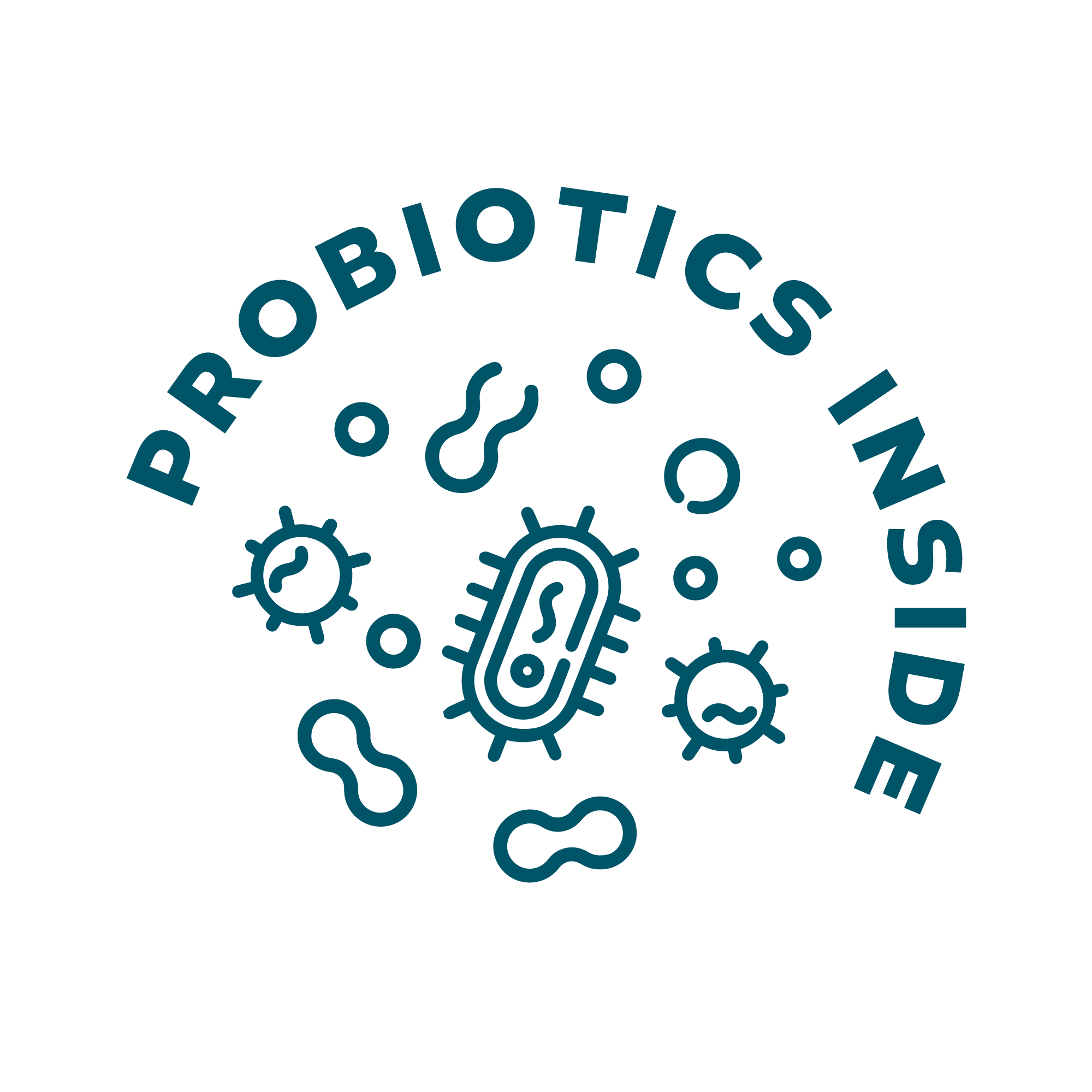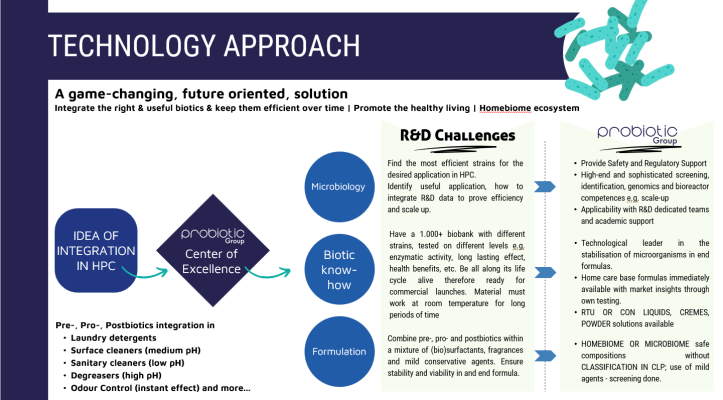FAQ Microbial-Based Cleaning Products (MBCP)

How long do the microorganisms remain active?
The activity duration depends on the level of soiling on the surface. Typically, microorganisms remain active for 4 to 5 days, but in poor conditions such as over sanitized spaces, this activity can be reduced to 1 to 2 days. Afterward, they revert to spore form if and only if no biocide/sporicide is being used on the treated surface.
In some cases, microorganisms have been observed to remain active for up to 10 weeks.
How quickly do they start working?
Bacteria take between 15 to 20 minutes to transition from spore form to active cell that produces metabolites such as enzymes.
Therefore, in some Home and Personal Care applications, enzymes alone might be more immediate, or a combination of enzymes and bacteria, such as in laundry-fabric care, can be optimal to ensure stain removal and odour control on fabric & in washing machine.
What enzymes do the microorganisms produce?
The microorganisms produce protease, lipase, and amylase. Depending on the specific application or product, they may also produce cellulase and urate oxidase. We have at our disposal a matrix of enzymatic activity per strain, and an identity card with genomic data that highlights performance, blend possibilities, and obviously safety.
How do microorganisms differ from enzymes alone? Why not just use enzymes?
Enzymes have a fixed concentration, whereas probiotic bacteria continuously produce enzymes until the soil or food source is eliminated. The production of enzymes thanks to microorganisms is tailored to the amount of soil or food present, making them more efficient over time – enabling the concept of long lasting cleaning.
How should bacteria be processed/handled in formulations?
For liquid versions, first add (bio)surfactants and a/multiple mild preservative(s) (Probiotic Group prohibits MIT/BIT and Phenoxyethanol in its mixtures) before introducing the bacteria consortium. Finally, add one of our blends of microorganisms to the mixture.
Note: the type of blend depends on the need, and final applications.
At what pH are they stable?
Microorganisms are stable at a pH range of ~3 to 11. If the formulation’s pH is adjustable, a slightly acidic or neutral pH is optimal for the bacteria to ensure stability – especially when formulated with mild food grade preservatives.
Do the bacteria start multiplying and growing in the formulation base?
No, they should not multiply as long as there is no ‘food’ in the formulation and a (mild) preservative is added. This ensures they remain dormant until applied on hard surfaces, animal or human skin, etc.
Are microorganisms safe for use?
Yes, our strains have been screened, documented and are for all HPC applications QPS – EU Group 1 risk group. Authorities looked into these to ensure safety for its users.
How do we help our customers and policy makers?
Thanks to our positioning of technological leader in understanding the mode of action of multiple strains in different applications, the know-how of our microbiologists, and our laboratory equipment. We offer proudly technical expertise all-day long, and agility on all level.
Summary:
- Microorganisms are a trending, bio-based ingredient for cleaning, cosmetics, and odor control.
- Probiotic Group maintains a biobank with over 1,000 screened and documented bacterial strains, suitable for most HPC applications in both liquid and solid formats.
- Microorganisms can enhance the cleaning performance of formulations and offer benefits beyond traditional cleaning ingredients.
In a nutshell, here Probiotic Group’s core expertise explained in a few key points:

© 2025 Probiotic Group. All rights reserved.
Imaginé et créé par
le studio créatif,authentique,audacieux lunivers
